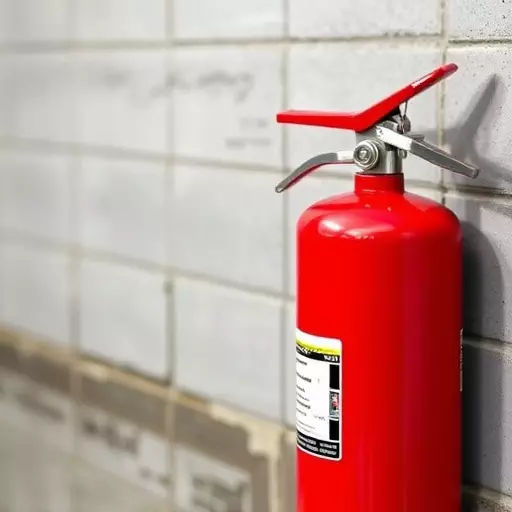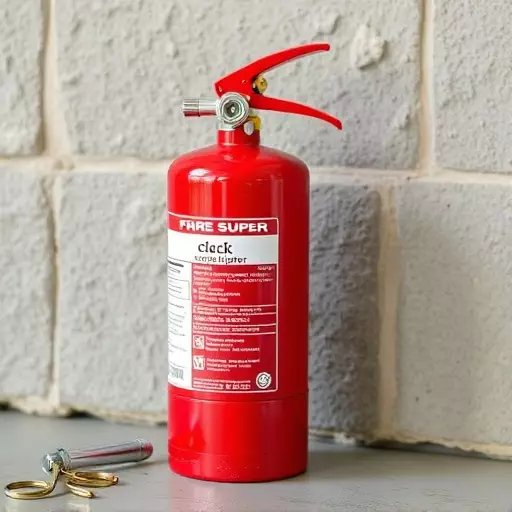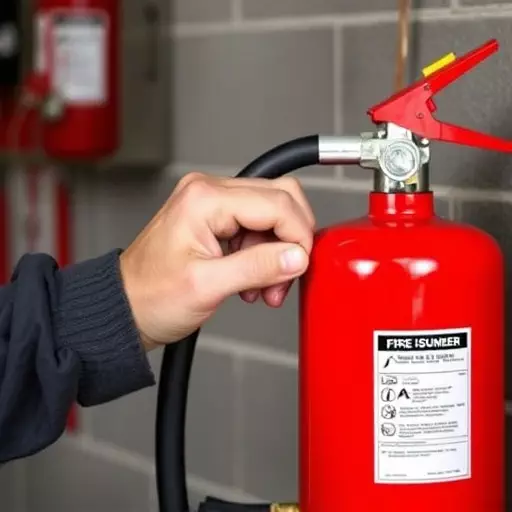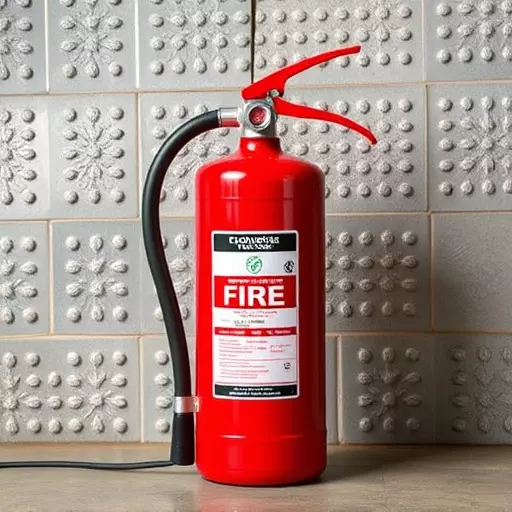The Occupational Safety and Health Administration (OSHA) emphasizes regular fire extinguisher maintenance and repair for workplace safety. Fire Extinguisher Training Spring Lake educates individuals on identifying repair needs through inspection, testing, and professional guidance. The repair process involves checking for physical damage, corrosion, leakage, malfunction during testing, pressure gauge discrepancies, and signs of past misuse. Regular visual inspections are crucial even if extinguishers seem undamaged, as age and usage may require repair or replacement to comply with OSHA standards and ensure effective fire handling.
“Ensuring fire safety in workplaces is paramount, and OSHA standards play a pivotal role. When it comes to fire extinguishers, proper repair techniques are critical to maintain their effectiveness. This comprehensive guide delves into the intricate world of fire extinguisher repair, offering a step-by-step process for Spring Lake businesses.
We’ll explore how to identify when an extinguisher requires attention and provide essential insights for those seeking Fire Extinguisher Training. By understanding the signs and following the repair process, businesses can ensure their fire safety equipment is always ready, ultimately saving lives and property.”
- Understanding OSHA Standards for Fire Extinguisher Repair
- The Fire Extinguisher Repair Process: Step-by-Step Guide
- Identifying Signs That a Fire Extinguisher Needs Repair
Understanding OSHA Standards for Fire Extinguisher Repair

Understanding OSHA Standards for Fire Extinguisher Repair
OSHA (Occupational Safety and Health Administration) sets stringent standards to ensure fire extinguishers remain safe and operational in the workplace. Adhering to these guidelines is not just a legal requirement but also a crucial step in maintaining a secure environment for employees and visitors alike, especially during emergencies. The Fire Extinguisher Training Spring Lake program emphasizes this by equipping individuals with the knowledge to recognize when an extinguisher needs repair.
The fire extinguisher repair process involves thorough inspection, testing, and maintenance conducted by trained professionals. Signs that a fire extinguisher requires repair include physical damage, corrosion, leakage, or malfunction during testing. Regular inspection is key; even if an extinguisher appears intact, it may have internal issues that can only be detected through proper testing procedures. This ensures that Spring Lake businesses comply with OSHA standards and are prepared to handle potential fires effectively.
The Fire Extinguisher Repair Process: Step-by-Step Guide

The fire extinguisher repair process is a crucial aspect of maintaining safety in any workplace or public space. It’s recommended to seek professional Fire Extinguisher Training Spring Lake for guidance, ensuring compliance with OSHA standards. Here’s a step-by-step breakdown:
1. Inspection: Regularly examine the extinguisher for any visible signs of damage, corrosion, or leakage. Check the pressure gauge and ensure it reads within the working range. Look for rust, paint chips, or any unusual markings that might indicate past misuse.
2. Functional Testing: Perform basic operational tests to assess its readiness. This includes activating the trigger (not fully, just to hear the mechanism) and confirming that the extinguisher releases the agent as designed. For dry chemical extinguishers, ensure there’s no clumping or moisture buildup inside the cylinder.
Identifying Signs That a Fire Extinguisher Needs Repair

At Spring Lake, proper fire extinguisher maintenance is paramount for ensuring safety and compliance with OSHA standards. The fire extinguisher repair process involves a thorough inspection to identify any signs that it has reached the end of its useful life or requires servicing. Some telltale signs that indicate a fire extinguisher needs repair include physical damage such as dents, rust, corrosion, or leakage. Additionally, pay attention to mechanical issues like difficulty in activating the lever or unusual noises when the handle is squeezed. Regular visual checks for pressure gauges at recommended intervals are also crucial indicators of potential problems.
Proper fire extinguisher training emphasizes recognizing these signs early on to prevent accidents and ensure reliable protection against fires. It’s important to note that even if a fire extinguisher appears undamaged, it may still require repair or replacement based on factors like age, usage history, and environmental conditions. Following OSHA guidelines for the fire extinguisher repair process is essential to guarantee safety and efficacy in emergency situations.


